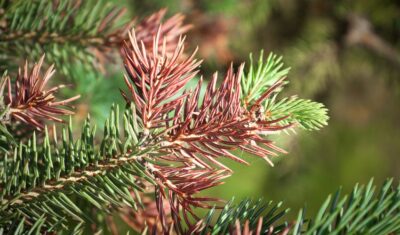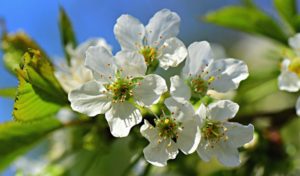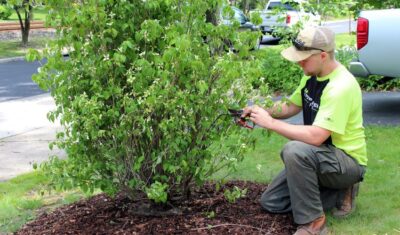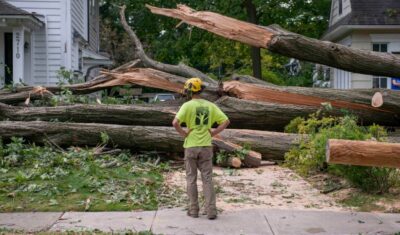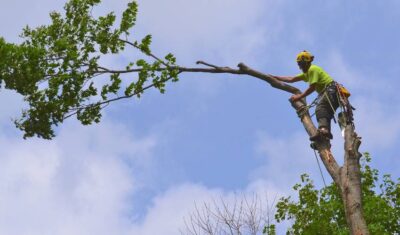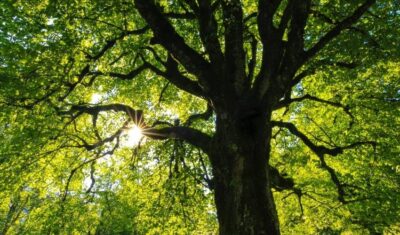You’ve probably heard the terms “mulch,” “wood chips,” or “wood chip mulch” but may not know what they are or how they’re different. If you’re wondering how to use mulch in your garden, and what kind of mulch is the best, we’re here to answer all your questions! In this article, you’ll learn all you need to know about choosing and applying mulch, including:
- What mulch and wood mulch are
- What wood mulch is made of
- Why it’s called organic
- How mulch benefits your garden
- Myths about using wood chips as mulch, including its effect on soil nitrogen and whether it can spread disease
- How to tell good quality wood mulch from bad
- Greenwood versus aged wood chip mulch
- How to use wood chip mulch and what not to do
What is mulch?
Mulch is a layer of material that covers the surface of your garden soil. We recommend (and use) wood mulch, and that’s what we’ll be discussing here. Mulch is made from all types of wood and, while there’s no “best” type of wood, some mulches are better than others (we cover that below).
How is wood mulch made?
The most common way most wood mulch is made is by chipping or grinding up trees. The wood we use for mulch may come from tree limbs that we’ve pruned off living trees, or from whole trees that have been felled at the end of their life or downed in storms.
You can think of this wood re-use as a speeded-up, urban version of how trees in forests die, fall over, and slowly decay back into the soil. It’s a repeating cycle of taking up and then returning nutrients to the soil. This is important to remember because adding mulch to your garden is not a one-time thing.
What’s the difference between wood mulch and wood chips?
Wood chips are shredded, chipped, or ground-up pieces of wood. It sometimes includes bark, branches, and leaves.
Wood mulch refers to the way wood chips are used. When spread on the soil surface as a protective top-dressing, we call it wood mulch.
Are there different kinds of wood mulch?
What your mulch looks like depends on what it’s made from. And what it’s made from can determine its quality, as well as its cost. Some of the most common types of wood mulch include:
- Mixed green waste or arborist wood chips
- Mulch made from shipping pallets
- Bark chip mulch
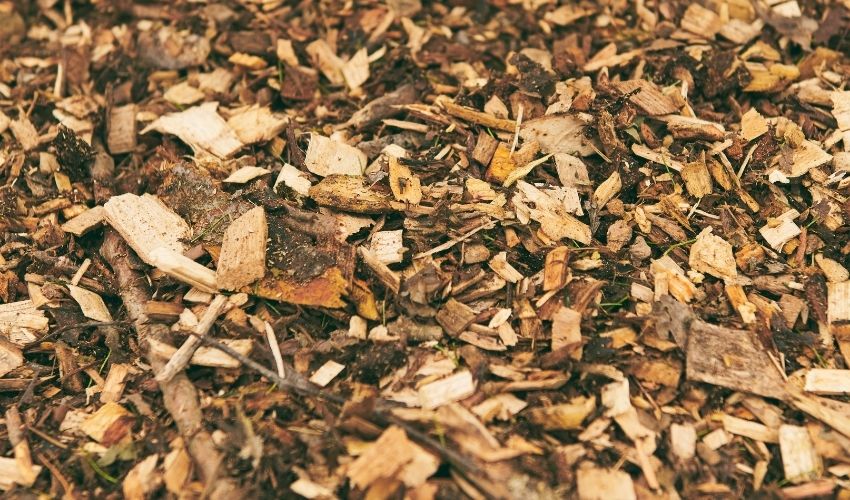
Wood chips are created from trees that have been removed by Independent Tree
Why is it called “organic mulch”?
Wood mulch is an organic material, meaning that it is made from organic matter – things that were once living, such as trees and plants. This is not the same as a food item that’s labeled “organic”, meaning that it was grown without pesticides.
One of the main characteristics of organic material is that it breaks down over time. And yes, you want this to happen to your wood mulch.
Why is organic mulch good for my garden?
Fully decayed organic matter is mixed into the soil by rainwater, earthworms, and soil insects, where it bonds to soil particles and provides nutrients to plant and tree roots. In forests, this decayed matter is called humus and it’s a big reason why undisturbed forests have such nutrient-rich soil.
The presence of organic matter means that soil is healthy and alive, full of beneficial microorganisms that break down dead plant material and help plants to grow.
NOTE: For more details, see this refresher about the importance of healthy soil.
If it breaks down, does that mean I need to replace wood mulch in my yard every year?
In practical terms, the fact that organic mulch decays mean you may need to replenish the wood-chip mulch in your garden on a regular basis. But that doesn’t mean you need to add more mulch every year! Only replace the mulch that has completely broken down.
How often you need to add more wood chips depends on the specifics of your garden’s microclimates, exposure to sun and wind, how much its soil surface is disturbed by planting or cultivating, as well as the type of mulch.
Always check the condition and depth of your mulch layer before adding more. If you’re using coarse wood chips (or arborist wood chips), aim for 3 to 4 inches – no more!
What’s the difference between compost and wood mulch?
The difference between compost and mulch can be confusing, and the terms may be used interchangeably or incorrectly. Mulch is a top dressing or soil covering, and compost is a soil amendment that is mixed into soil. Mulch may be composted (meaningfully aged and decomposed) or green, while compost is always fully decomposed.
The easiest way to remember which is this way:
- Mulch goes on top of the soil
- Compost goes in
Both mulch and compost benefit and enrich the soil, but they do it at different rates and in different ways.
PRO TIP: Want to learn more about compost? Ohio State has some helpful information about composting.
Can I incorporate wood chips into the soil, like compost?
Wood chips are used as mulch, not as a soil amendment. But if wood chips decompose to provide organic matter for the soil, why can’t you use them like compost?
Well, because they decompose. When a load of finely-ground wood chips or sawdust is mixed into the soil, it can tie up nitrogen in the soil as it decomposes. Eventually, it’ll release the nitrogen back into the surrounding soil but, until then, you may find your plants suffering from nitrogen deficiency.
This is not what happens when wood chips are spread on the soil surface as mulch.
If I use pine bark and needles as mulch, will that make my soil more acidic?
No type of wood chips (or any other organic mulch) will change the pH of the soil in your landscape. The surface of the soil where it touches the mulch may become slightly more acidic but this is only temporary and won’t have any effect on plants growing in the soil.
What about black walnut wood chips – will they kill my plants?
Black walnut trees inhibit other plants from growing near them. But there is no reliable evidence that mulch made from black walnut wood or bark has the same effect. So no, walnut wood mulch won’t kill your landscape plants.
What is green wood chip mulch (also called arborist wood chips)?
Green mulch and green wood chips are terms used to describe wood products that have not been fully dried or fully decomposed (composted). Greenwood chips have a naturally higher moisture level than dried or composted wood chips.
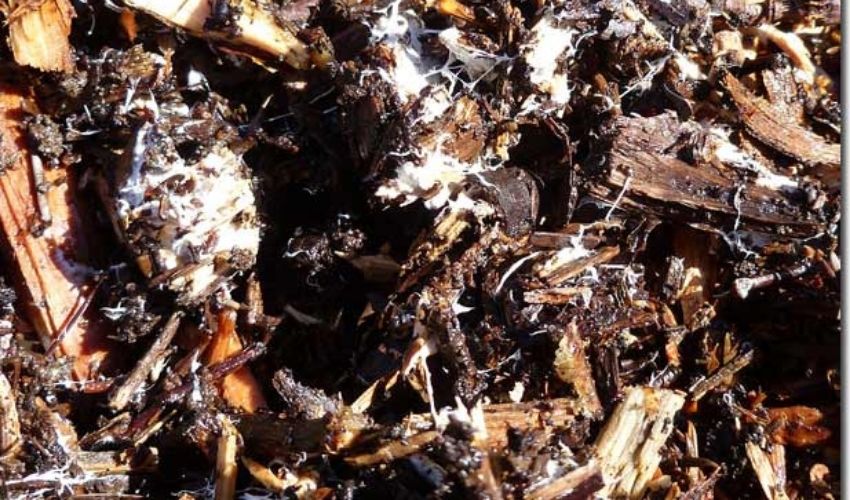
Wood chips break down over time, providing nutrients to plant and tree roots
Do fresh/greenwood chips really “steal” nitrogen from the soil?
Unfortunately, arborist wood chips have a bad name in many conversations about mulch. The persistent myth is that fresh mulch sucks out all the nitrogen from your soil to feed its own decomposition, leaving you with barren soil. This is an exaggeration that needs to be clarified!
Here are the facts:
- Yes, some nitrogen will be depleted from the surface of your soil when you cover it with a layer of fresh or green wood chip mulch. This is a temporary event and one that has a surprising benefit.
- When nitrogen at the surface of the soil is depleted, the plants that are impacted by it are primarily weeds. Weed seeds are most commonly found on the surface of the soil, where they have been wind-blown or deposited by shoes or equipment.
- What isn’t found at the surface of soil are tree and shrub roots, which are generally 12 to 18 inches below the surface. They make use of the nitrogen, phosphorous, and micronutrients that are deeper in the soil, bonded to other soil particles.
The bottom line is that temporary nitrogen deficiency at the soil surface can benefit your garden by depriving weed seeds of the nitrogen they need to germinate and grow. Open soil provides perfect conditions for weed sprouting. But soil buried beneath a layer of green wood chips both prevents sunlight from stimulating weed seed germination and prevents germinating weed seeds from finding nitrogen to fuel their growth.
Can I use green wood chips in my vegetable or flower bed?
We don’t recommend using green wood chips for vegetable or annual flower beds that are seeded. For your vegetable gardens, use compost in your soil and finely ground, fully composted mulch atop it.
However, fresh wood chips are just fine for mulching around trees, shrubs, and perennials that have established root systems.
Can wood mulch from a diseased or infested tree spread the disease or insect pest?
Generally speaking, you don’t need to worry about dead or dying trees infecting wood mulch with insect pests or disease pathogens.
For example, there’s no need to be concerned about using wood mulch made from ash trees, even in areas like northeast Ohio where Emerald Ash Borer (EAB) continues to spread. The one caveat is that ash tree mulch must be ground into chips that are one inch or less in size, whether or not it has fully aged.
Just to be safe, avoid using ash tree wood chips that are 4 inches or more in size. Research shows that piles of large wood chips can provide shelter for EAB larvae.
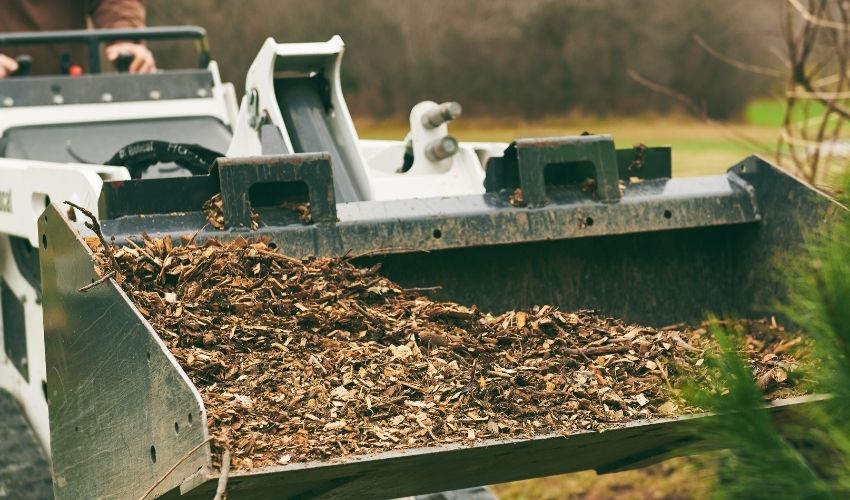
Independent Tree offers mulching and wood chip mulch replenishment made with trees and branches we’ve removed
Where can I get wood chips locally?
If you have a big garden, can’t do this work yourself, or you don’t have enough time, there’s help available.
We are known for our quality tree care, but we also offer mulching and mulch replenishment.
Not only will we use our own mulch but our crews can also quickly and professionally mulch your garden for you. And we can set up a maintenance schedule for you so that your mulch is regularly replenished. Give us a call and learn how we can coordinate our seasonal services so that your garden will be at its best all year!
Learn More
Contact Independent Tree to learn more about our professional mulching services, how to set up recurring maintenance programs for your plants and trees, and more!Recent Articles
Topics
About The Author

STAY IN THE LOOP
WITH OUR
LATEST UPDATES
"*" indicates required fields


